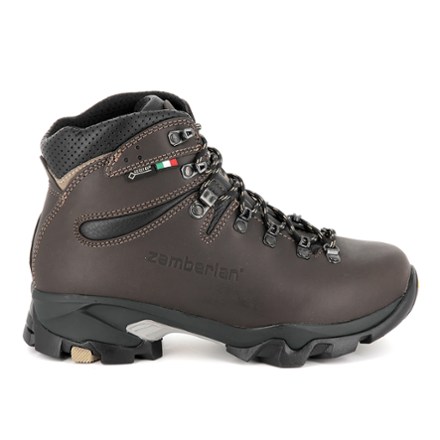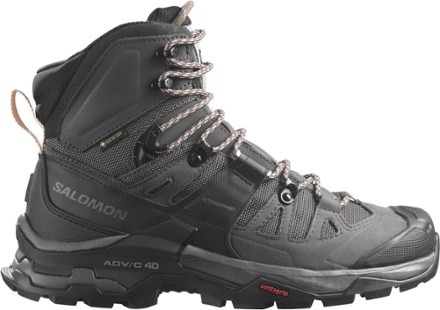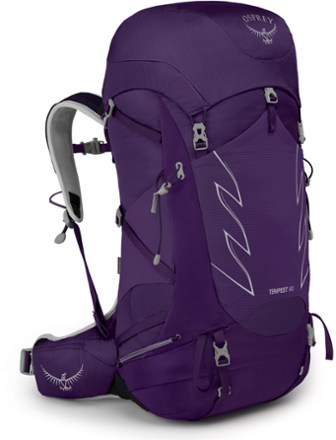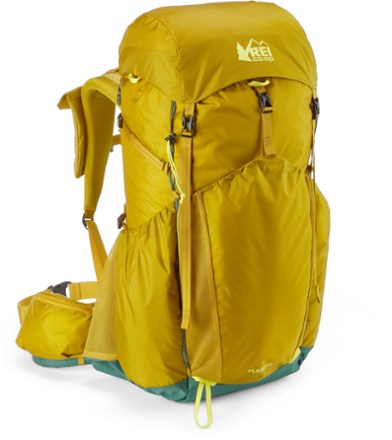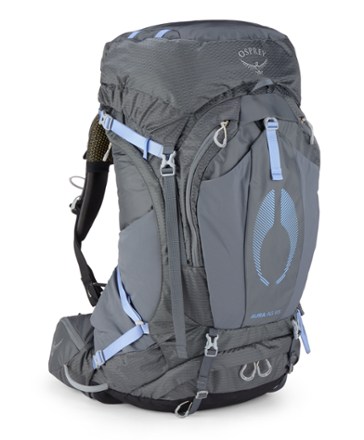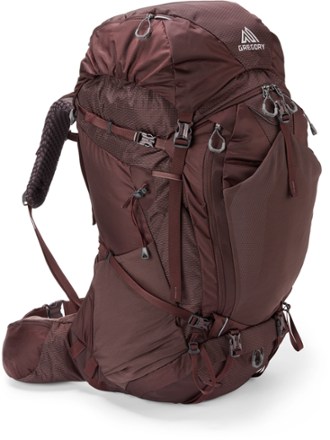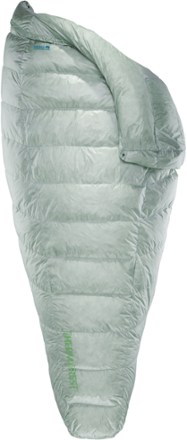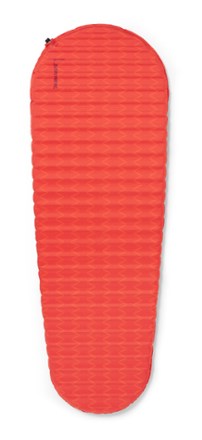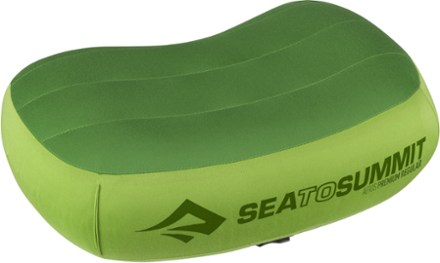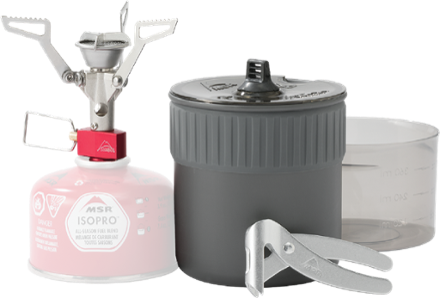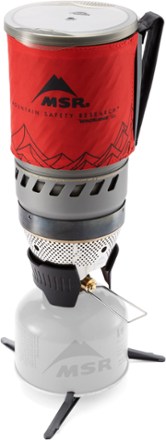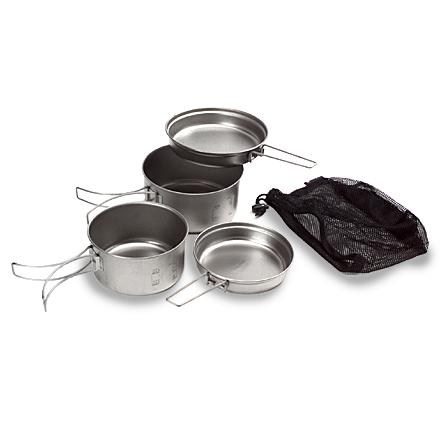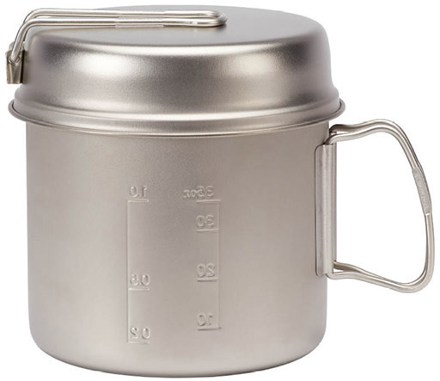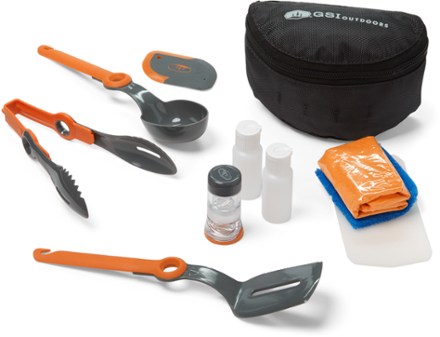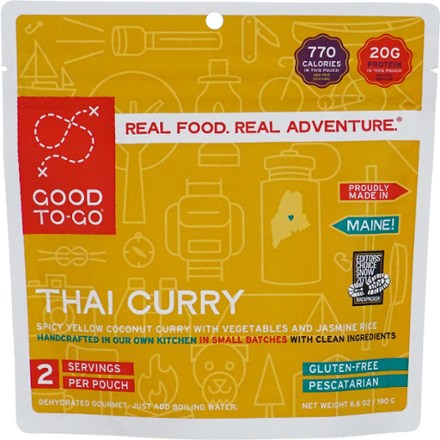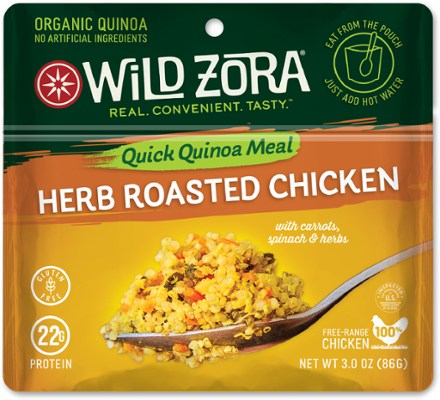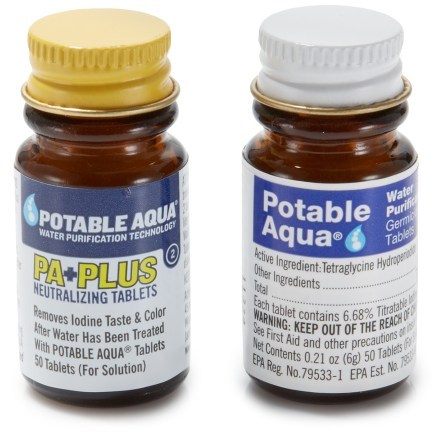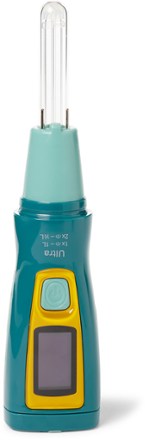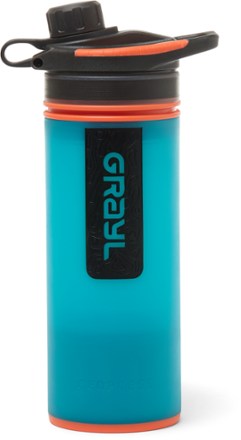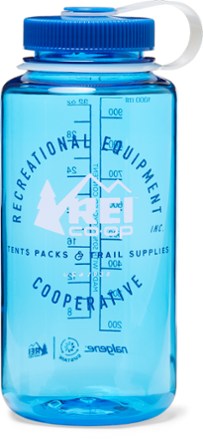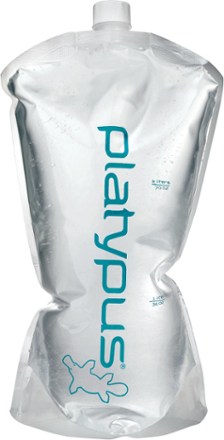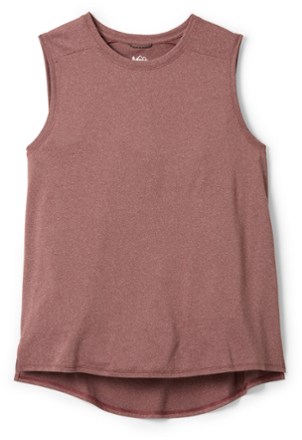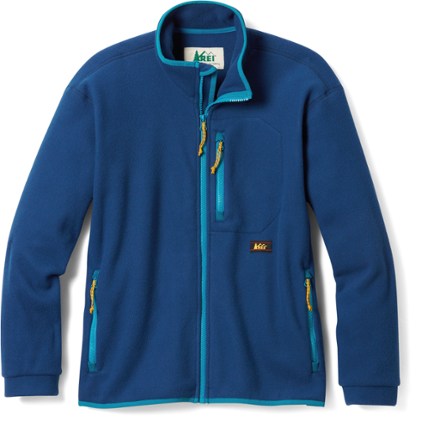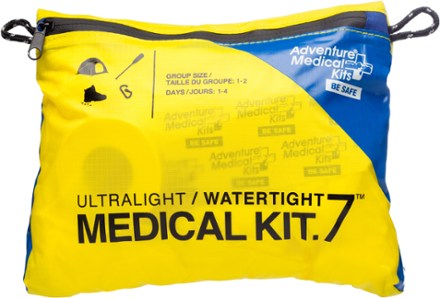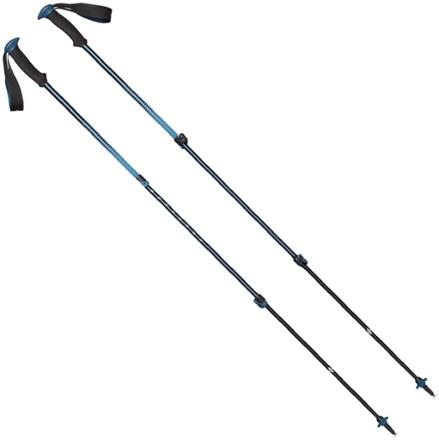
Best Backpacking Gear Guide:
What's New And What Works
By Diane Spicer
The best backpacking gear is the stuff that works hard for you, day after day, to deposit a satisfying trip's worth of memories into your hiking archive.
Let's use REI Co-op's gear list as a sensible starting point to cover the best backpacking gear available today.
It's also a handy summary of backpacking essentials.
Here's how we'll roll in this
Best Backpacking Gear Guide
Hiking For Her's recommendations for specific gear in each category are first.
Links to detailed background information on how to buy that particular type of hiking gear will follow.
We'll work our way through your gear list in no time flat!
Each photo takes you to the REI Co-op website, where you can read technical details and user reviews.
As an affiliate, HFH may earn from your REI purchase when you use the links on this website to buy the best backpacking gear for your plans a nd hiking style.
Pssst! If you're not a co-op member yet, you're missing out on some great benefits!
Drop down to a specific section in this Best Backpacking Gear Guide with these links:
- Hiking boots or shoes
- Hiking socks
- Backpack
- Tent
- Sleep system (sleeping bag/quilt and sleeping pad)
- Stove
- Backpacking kitchen gear
- Backpacking food
- Water treatment supplies & bottles
- Clothing layers
- Emergency and hygiene supplies
- Ten Essentials
- Gear repair kit
- Optional comfort gear
Or roll through one at a time. Either way, great gear recommendations!
Best backpacking gear
begins with boots and shoes
The comfort of your feet is directly tied to your enjoyment of the trail.
Get your footwear choice right, and the rest will fall into place.
Here are some top boot and trail shoe recommendations for you.
Hiking boots & trail shoes for beginners
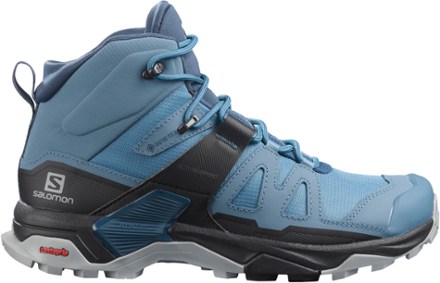 Salomon X Ultra 4 Mid GORE-TEX Hiking Boots Salomon X Ultra 4 Mid GORE-TEX Hiking Boots
|
As you learn to backpack, these over the ankle lace up boots are going to protect your ankles plus repel mud & grit (mud guards, toe caps, high cut). At 1 pound, 11 ounces for the pair, you won't notice these on your feet. These boots will provide reliable footing on any trail, so important when you're just starting out as a hiker. |
|
KEEN Targhee Vent Low hiking shoes give you lots of good features: breathable mesh lining, grippy soles and reliable KEEN quality and comfort. |
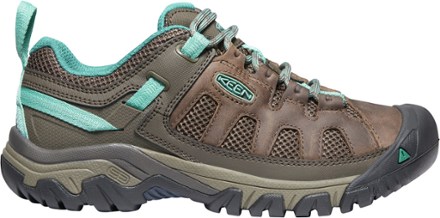
|
|
Salomon X Ultra 4 Low GTX Hiking Shoes are great for trails which take you through variable terrain. Your feet will not slide around in this shoes! |
Trail tip:
If you have wide feet, and your load isn't too heavy, choose trail shoes over boots. More shoe brands feature wide offerings, compared with boot brands.
Big cost savings when you catch a sale, too!
- More tips and recommendations for hiking with wide feet here
Hiking boots for rugged trails are definitely on
the best backpacking gear list
When your plans include lots of miles on rocky, muddy or gritty trails in uncertain weather conditions, you need footwear that will protect your feet while providing comfort and support.
The price point goes up, but it's important to keep your feet happy.
And the way to do that is to keep them safe and stable.
Here are two backpacking footwear recommendations with a balance of quality, price point, durability and features.
- I know they work because they're on my feet as a backpacker!
Additional backpacking footwear tips
Links to background information so you will find the right pair of hiking boots:
And the best trail shoes:
Hiking socks are going to keep your feet happy as well. Everything you ever wanted to know about them is right here.
Take a peek at two respected brands for technical socks that backpackers need to ward off blisters and wick moisture away from skin inside those hiking boots and trail shoes.
|
Smartwool Performance Hike Light Cushion Tube Stripe Crew Socks 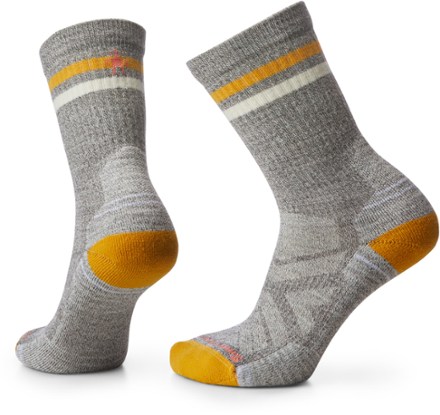
|
Darn Tough Gatewood Boot Sock Full Cushion Socks 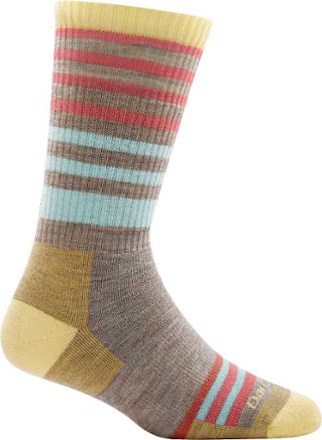
|
Even more best hiking socks recommendations are waiting for you here.
The merits of compression socks for hikers are considered here.
Best backpacking gear:
your choice of backpacks
Sounds redundant, but there are many types of backpacks out there in the gear universe!
You want to choose the right size, with the right features, for your backpacking adventures.
For short trips, you'll need a pack with a volume of at least 35 liters.
You can go as high as 50L if you want to haul a lot of gear (see comfort ideas at the end of this Best Backpacking Gear Guide for sensible ways to add to your load).
Go up from there for trips lasting longer than 5 days, but no more than 70L unless you like suffering.
Best backpacks for overnights and long weekends
Best backpacking backpacks
for serious multi day trips
Best ultralight packs for backpacking
|
If you count every ounce, and are willing to pay top dollar for a very light backpack, look at this one. Smaller volume, but you're carrying less gear, right? |
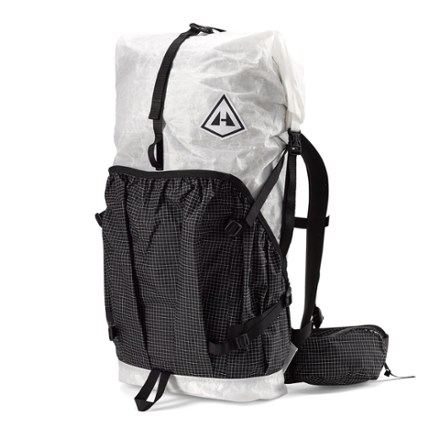
|
More backpacking pack tips to make
the process of buying one easier
There's a lot to get right about selecting a backpacking pack.
It makes sense to slow down and get to know the basics before you go shopping for a backpack.
These Hiking For Her resources take you through how a backpack is designed, with tips on what to look for when you shop:
Best backpacking gear:
tents
Once you've figured out how to carry your home away from home, it's time to decide exactly what that home will look like.
You can cowboy cowgirl camp, just you and the bugs under the stars.
You can create an overhead shelter with a backpacking tarp.
Or you can use a backpacking tent to shield yourself from insects, reptiles, curious animals, and all forms of moisture (think three phases of water).
The types of backpacking tents available to you reflect the universal needs and personal preferences of backpackers. Let's take a look at a few.
For a straightforward approach to shelter for one person, the REI Co-op Trailmade 1 Tent with Footprint is a solid choice.
Why?
One door with vestibule for gear storage, decent headroom, and ventilation designed to handle condensation.
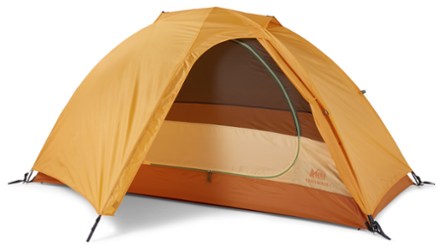
|
Coming in at less than 4 pounds, it's worth a serious look if you're solo backpacking and want full weather protrection. Or just want your own space on a group trip! |
For two person comfort look at the MSR Hubba Hubba 2 Tent.
|
It's the tent I use, and have never regretted it, even in the midst of wind storms that made me cry. Read some backcounytry trip reports when I used this tent. |
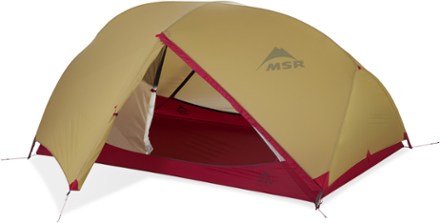
|
It's way less than four pounds, easy to set up and tear down, and is plenty roomy for two people and their elbows.
The generous vestibules at each door, created by the rain fly, will shelter backpacks and muddy boots, with some room left over for your soaked rain gear.
More to think about when
selecting a backpacking tent
Weight is an important consideration for the best backpacking gear, but it's not the only one.
These tips step you through all of the factors that go into making a good decision about a lasting commitment: your backpacking tent.
Best backpacking gear includes
sleep systems
You've never been as bone tired and sore as when you're a few days into a long backpacking trip.
But that's exactly when you want to feel well rested and full of energy.
Here's the thing:
Pulling together the right backpacking sleep system for your body type, sleep habits and personal preferences takes some effort. No way around it.
But, hey, your comfort and safety is worth it!
What's in a backpacking sleep system?
A sleep system consists of:
- a cocoon of warmth and softness: a backpacking quilt or sleeping bag
- a sleeping pad if you're using a ground shelter (tarp or tent)
- a bag liner in certain circumstances
- a backpacking pillow (considered optional only by those who haven't found the right one yet)
Here are my top picks for putting together a good sleep system on the first try.
Sleeping bag or backpacking quilt:
which is the best backpacking gear?
Great question! I'm glad you asked it before you bought one.
Read these resources to get up to speed on why each of them makes sense for a particular type of backpacker:
Down or synthetic sleeping bag?
How low should I go with the temperature rating on a sleeping bag or quilt?
Does the placement of the zipper really matter?
So much to think about, but these tips will help you sort out what is most important to you in a sleeping bag for backpacking.
Or a backpacking quilt.
Best backpacking gear: sleeping pads
If you're ground camping or sheltering beneath a tarp, a good sleeping pad will reflect your body heat back to you and give you a deeper night's sleep.
Sleeping bag liners are part of the
best backpacking gear list
Some backpackers want to extend the lifetime of their gear by choosing add ons to reduce grit and grime.
A good example is a bag liner.
A sleeping bag liner is a great way to keep your body odors and dirt away from your synthetic or down fill sleep system.
Another reason for a liner?
- Extra warmth to extend the seasonality of your backpacking sleeping bag.
Read more reasons why carrying a sleeping bag liner makes sense here.
Here's what I use to extend the seasonality of my sleeping bag: the Sea to Summit Thermolite Reactor Extreme Sleeping Bag Liner.

|
Love its softness, and its ability to roll up small but give me the reassurance of additional warmth when I need it. Read my detailed review here. |
Tip: Just carry the liner for hot hiking destinations when you want to go as lightweight and unencumbered as possible.
Backpacking pillows are a thing!
Good support for your neck is important when you bed down after a long day of hiking.
Trail facts:
- Your backpack will tug your neck to the point where it gets sore.
- Your posture on the trail might be sub-optimal., as you crane your neck forward or hunch over to bear the load.
Solution?
Rest your weary head and sore neck on a comfortable backpacking pillow like this one.
Wondering how to shop for the best backpacking pillows?
My extensive guide will help you out!
Best backpacking gear:
stoves
A stove is an important comfort and safety item on the best backpacking gear list.
Hot water, no matter what you pour it on or dissolve in it, spells immense comfort when temperatures dip and the sky drips, day after day on a backpacking trip.
Be sure you understand the types of backpacking stove choices, using these tips.
When weight is an issue, don't mess around with all the bells and whistles.
You might be wondering...
Why is the fuel canister grayed out in these photos?
The "fuzziness" indicates you need to purchase them separately.
Tip:
- They cannot be taken onto commercial planes, so make arrangements to purchase them at your destination.
Best backpacking gear
for your camp kitchen
If gathering all of the best backpacking gear on your gear list is working up an appetite, take that as an omen.
Your camp kitchen is going to play a big role in a successful backpacking trip.
And this gear is exactly what you need to pull off nourishing and satisfying meals when your hunger level skyrockets.
If you're a hiking duo, take a look at this cookset:
More tips on backpacking kitchen essentials
For a thorough discussion and solid recommendations for the best backpacking gear for cooking on your trip, read this.
Titanium cookware has a lot of benefits, outlined here.
You'll also want to know how to do dishes to keep yourself in good health.
- Tips and supplies you'll need here!
Backpacking food choices
to go along with the best backpacking gear
REI Co-op offers lots of options for a hungry backpacker.
My favorite brands of lightweight, nutritious food are highlighted in this Best Backpacking Gear Guide.
Lots more backpacking food tips for you!
Here's an important one.
When you buy 8 or more full priced backpacking food items, you save 10% at REI! That's on top of your annual rebate (around 10%).
Not an REI Co-op member yet? Read about membership rewards here.
To select exactly the right food for your backpacking plans, explore these tips:
- satisfying backpacking meals
- gluten free food for the trail
- paleo backpacking food
- best trail snacks
- backpacking meal ideas
- best backpacking rice
- best backpacking protein sources
Best water treatment supplies
and water bottles for backpackers
Staying hydrated is a big deal for anyone who intends on staying healthy and strong during a backpacking trip.
That's you, right?
So pay attention to your choice of hydration system, and be prepared to have a Plan B to supply your clean water for cooking and drinking on the trail.
Even the best backpacking gear can go sideways on you!
Here are some tried and true water treatment methods.
Your cheapest, lightest option is chemical treatment of surface water.
Not a fan of relying on water treatment batteries on a backpacking trip?
Then consider a filter.
A backpacking water filter needs to be chosen carefully, taking into consideration the amount of effort it takes to push water through it and the volume of water needed per filtration event.
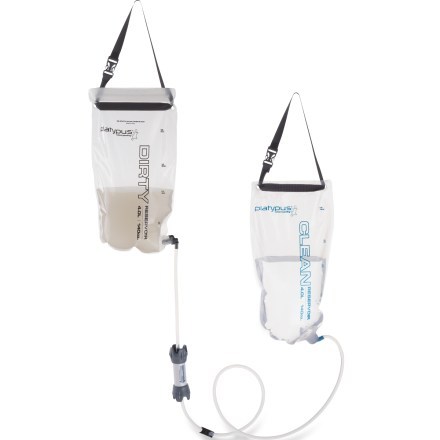
|
Here's an easy choice for backpackers who need high volumes, the 4 liter Platypus GravityWorks Water Filter System. One bag for dirty water, one for clean, and let Mother Earth do the work! |
Going solo or want to handle your water separately from others?
Water bottles or a hydration backpack?
This is a personal preference.
The simplicity of water bottles, and the ease of cleaning them, are two big factors in carrying them in the outer mesh pockets on your backpack.
Your hiking pace needs to factor in time to stop and sip.
If you go with the Geopress above, you've solved your filtration and bottle problems in one go.
Water bottle choices I've used and continue to use:
A hydration system (reservoir, tubing, bite valve) in your backpack, on the other hand, delivers water all along the trail without having to stop to fish bottles out of your backpack.
Keeping this somewhat complicated system clean?
An important commitment that cannot be overlooked.
- Choose a brand compatible cleaning system and use it often.
Speaking of compatibility in the
best backpacking gear...
Whatever approach you choose, be sure it's compatible with the water treatment equipment you chose above.
- Test your entire water treatment & carry/delivery system before you leave for your backpacking trip.
- Everything has to fit together and work seamlessly, and be well maintained, or you're going to be in trouble.
More details on your water strategy choices
Water will become something you crave as you work up a sweat, regardless of the temperature.
But some backpackers report not feeling thirsty as they hike.
Yikes!
Read up on why making time to stay hydrated on your backpacking trip is so important:
Multiple clothing layers
are considered best backpacking gear
The topic of dressing in layers is one of those backpacking fundamentals that keep all of us out of weather and temperature related trouble.
A beginner backpacker might not want to commit to expensive technical layers.
On the other hand, a serious layering system for those who know they're in this backpacking thing for the long haul is a smart idea.
A beginner backpacker layering system:
a good place to start building the best
backpacking gear
Clothing is gear!
These inexpensive but indispensable pieces of clothing will keep you happily and safely layered up.
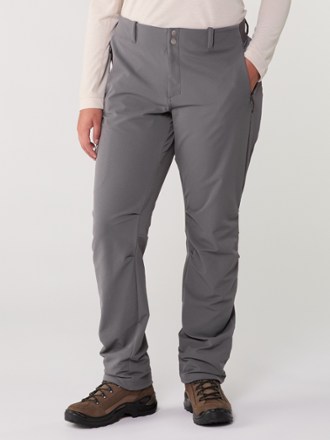
|
These REI Co-op Activator 3.0 Pants are breathable, wind and water repellent, stretchy and have lots of pockets. A good choice for the trail! |
Your outer layer is your line of defense against moisture and temperature swings.
That's why how to choose a good rain gear combination is vital information for a backpacker to have.
Luckily, I've got you covered:
A technical layering system
If you're doing three season backpacking or plan to stay out for weeks at a time (lucky you), it's time to get serious about your layers.
There are a lot of nuances and factors that go into creating your perfect backpacking layering system.
Take a deep dive here:
- Layering strategy
- Best extended size layers
- Athletic clothing for layering
- Best sports bras for hikers
- Best women's rain gear
- Hiking vests as cozy midlayers
Best backpacking gear for
emergencies and good trail hygiene
It might be an emergency when your face feels like a grease pit and your hair is standing up in dirty clumps.
But not if you carry hiking hygieine supplies!
To meet a more serious emergency, carry a basic first aid kit.
- And know what to do with all of its components.
Two ways to go, a basic kit for yourself, or a kit for larger groups of backpackers:
Detailed female hiker hygiene tips and tricks
You don't want to feel gross on a backpacking trip.
And you don't want to scare your trail buddies, either.
These tips will help you put together exactly what you need to care for all of your personal hygiene needs when you're in the outdoors 24/7:
Don't forget your Ten Essentials
as part of the best backpacking gear!
As a backpacker, you've got most of them already because you're hiking, cooking and navigating.
These mighty essentials are in your backpack to give you a margin of safety on a backpacking trip.
For the sake of extreme caution, let's call out the Hiking Ten Essentials.
The quick list:
1. Extra clothing
2. Extra food and water
3. Sunglasses
4. Knife
5. Fire starter
6. Matches
7. First aid supplies
8. Illumination
9. Map
10. Compass
Lots more details, with recommendations here.
Go beyond the essentials and put together your own backcountry survival kit with these tips.
A backpacking gear repair kit
is also considered essential
You're only as good as your gear when you're out there.
If you're using this Best Backpacking Gear Guide, you're going to a lot of trouble to select the right technology.
Now learn what to carry when a gear repair is necessary (and it will be, sooner or later).
Best backpacking gear for comfort
REI's gear list suggests that backpacking comfort gear is optional.
I say otherwise.
Your sore, tired body will be grateful for a few comforts like these!
Sometimes it's worth the weight to feel comfortable day after day.

|
Take a load off your knees and back as you enjoy your backpacking meal with an REI Co-op Flexlite Air Chair.
|
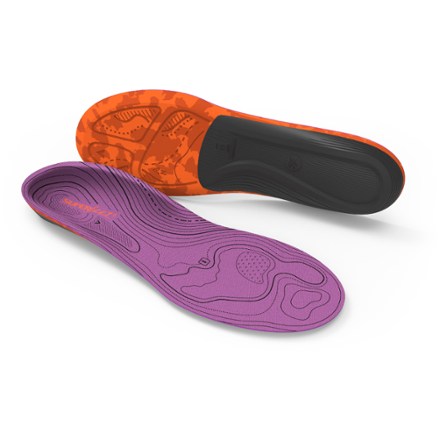
|
Support your feet in their relentless weight bearing duties with a pair of Superfeet Trailblazer Comfort Hiking Insoles.
|
Trekking poles for backpackers:
among the best backpacking gear you can use
It feels weird to put trekking poles on the list as a "comfort item", but it's true.
A well designed pair of poles relieves strain on your knees during descents.
They give your upper body the ability to contribute to your balance and stability.
And they have been shown to have lots of other benefits for hikers.
- Read more here.
Many backpackers scoff at the idea of poles - until they try them.
You'll be amazed at what a difference trekking poles make in the way your body responds to the trail, and feels at the end of the day.
What to look for in trekking poles?
You want a pair of poles that feel comfortable in your hands, and will extend to the correct length for your height.
You also want to get them into a tiny footprint and lash them to your pack when you don't need them.
Other factors to consider: ultralight, shock absorption, and brand.
But why stop there with comforting
best backpacking gear ideas?
Here are forty more backpacking comfort ideas!
And if you really like the idea of being comfortable no matter where you hike and car camp, here's a Comfort Guide just for you.
So now you know how to select
the best backpacking gear!
Congratulations! You've reached the end of this Best Backpacking Gear Guide.
It's designed to give you all the information and recommendations you need to get yourself ready to hit the trail.
- I've shared what I know works, and what is worth the money.
I hope this backpacking gear guide been helpful!
Happy Backpacking Trails to you!
More to ponder when searching for the best backpacking gear:
Home page > Best Backpacking Tips >
Best Backpacking Gear Guide For 2023
|
I get emails all the time about what I wear, eat, carry and love to use on the trail. That's
why I provide affiliate links to you: the best gear that I use myself and have seen used by other hikers is instantly
available for your consideration, and the gear company sends a few
pennies per dollar to this reader-supported hiking website. There is no added cost to you! Everyone ends up a winner: Great gear for you, strong gear companies, and more free hiking tips for everyone. Thanks very much for your support. It's warmly and sincerely appreciated. It also helps send these hiking tips to all your virtual trail buddies around the globe. |
 |

